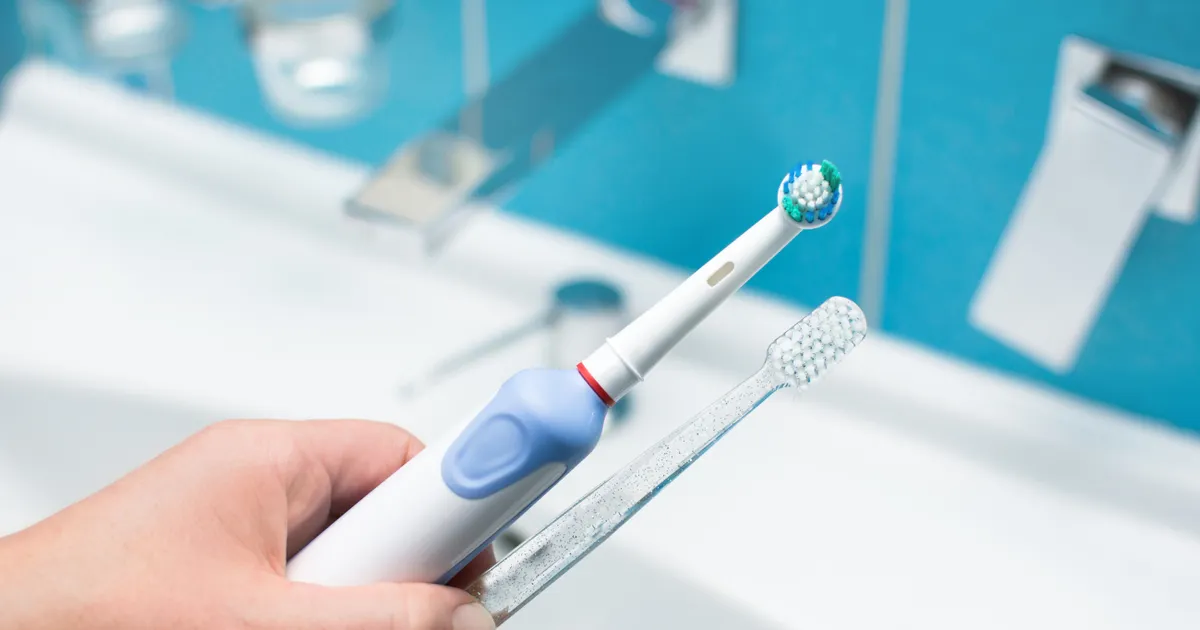When it comes to oral hygiene, a critical decision confronts us all – choosing between manual and electric toothbrushes. While many people swear by the tried and tested manual option, an increasingly sizable group swears by the innovation of the electric toothbrush. Fortunately, if you start a search online today, you can learn about both electric and manual toothbrushes, examine their benefits and limitations, and decide, once and for all, which choice is best for you.
 Shutterstock: MJfotografie.cz
Shutterstock: MJfotografie.czUnderstanding the Electric Toothbrush
Electric toothbrushes emerged as an innovative solution in oral care, offering a user-friendly approach to brushing teeth. With automated bristles oscillating or vibrating at high speeds, they aim to maximize cleaning effectiveness.
Many models come with in-built timers, ensuring users adhere to the recommended two-minute brushing duration. Some advanced versions even include pressure sensors to prevent users from brushing too hard, a common issue linked to gum damage.
Exploring the Advantages of Electric Toothbrushes
Arguably, the most significant advantage of electric toothbrushes lies in their efficient plaque removal capabilities. Studies indicate that these devices, particularly those with oscillating-rotating technology, can remove more plaque than their manual counterparts. 1
Furthermore, the integrated timer can instill good habits, encouraging individuals to brush for the appropriate length of time. Electric toothbrushes can also be advantageous for people with physical limitations, as the motorized movement requires less effort than manual brushing.
Additional Advantages of Electric Toothbrushes
Beyond removing plaque more effectively, electric toothbrushes can also be beneficial in addressing specific oral health issues. For example, they can be particularly effective for those with braces as they ensure more precise cleaning.
Additionally, they can help individuals suffering from gingivitis by improving gum health over time. For children or those learning proper oral hygiene, an electric toothbrush can simplify the learning process.
Considering the Drawbacks of Electric Toothbrushes
Despite the benefits, electric toothbrushes aren’t without drawbacks. First and foremost, they are generally more expensive than manual toothbrushes, and replacement brush heads can also be costly. The batteries alone can range from $10 at a time (for AA batteries) to approximately $200 (for lithium-ion batteries). 2
On that note, the requirement of electricity or batteries for operation impacts its accessibility and convenience. Additionally, their bulkier design can make them less portable, potentially causing problems for frequent travelers.
Manual Toothbrushes: A Traditional Approach
Manual toothbrushes have been a reliable tool in oral hygiene for centuries, providing a simple yet effective way to maintain oral health. They require no power source, and their compact size makes them highly portable.
The variety in bristle hardness and head size allows users to find a brush that suits their comfort and needs. Furthermore, with proper technique, a manual toothbrush can provide a thorough cleaning.
Benefits of Using Manual Toothbrushes
Manual toothbrushes excel in their affordability and availability. They are inexpensive to replace and are readily available in grocery stores, pharmacies, and even hotel rooms if you forget yours while traveling.
Additionally, manual toothbrushes offer more control over the brushing process, which some individuals may prefer. You can decide how much pressure to apply, which areas to focus on, and the speed at which you brush.
Benefits of Using Manual Toothbrushes
The low cost of manual toothbrushes often overshadows their other benefits. They are quiet and offer a hassle-free operation without needing a charging station or batteries. 3
Moreover, they provide tactile feedback, enabling users to feel the pressure they’re applying to their teeth and gums, reducing the risk of over-brushing. Manual toothbrushes are also often included in dental hygiene campaigns due to their affordability and ease of distribution.
Limitations of Manual Toothbrushes
Despite their simplicity and ease of use, manual toothbrushes have limitations. One significant drawback is the lack of a built-in timer, making it easy for individuals to underestimate their brushing time.
Additionally, achieving the recommended circular brushing motion can be more challenging with a manual toothbrush. For those with mobility issues, manual brushes may require more effort to ensure a thorough clean.
Making the Right Choice: Factors to Consider
Ultimately, the choice between an electric and manual toothbrush depends on personal preference and individual needs. Both types can effectively clean teeth if used properly.
However, it’s worth considering factors like cost, accessibility, and ease of use when making a decision. Also, it’s important not to underestimate the importance of regular flossing, using mouthwash, and visiting the dentist.
Correct Use of Toothbrush Is Most Important
In the end, the journey to optimal oral health goes beyond just picking the right toothbrush. Both electric and manual variants have a place in modern dental hygiene, each with its own unique strengths and weaknesses. Research can help you determine which option is best for your oral health.
As we recognize the importance of personalized dental care, it becomes clear that individual preference, specific oral health conditions, and lifestyle choices are significant factors. More than the choice of tool, it’s the regular, correct use of the toothbrush, along with a comprehensive dental care routine, that truly contributes to maintaining a healthy smile.